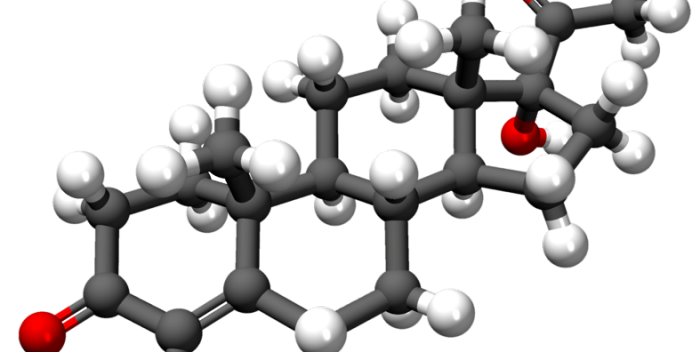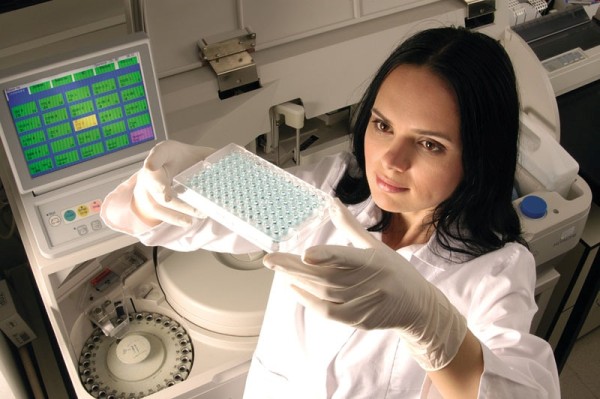The rate of progesterone in women
Progesterone is a steroid hormone of the corpus luteum of the ovaries, which is produced in both the female and male body. Its value in the body is very high, therefore, a deficiency or an overabundance seriously affects the state of health. What he is responsible for, why a failure occurs and how to fix it - we will tell in this article.
Content
What is the hormone progesterone responsible for?
Experts often call progesterone the hormone of pregnancy, because it produces the corpus luteum, i.e. a gland that appears in the ovary after ovulation. If pregnancy does not occur, then the corpus luteum dies after a couple of weeks and menstruation comes. With the onset of pregnancy, the corpus luteum continues to be produced by progesterone until the sixteenth week, i.e. until the formed placenta takes over this function. Thanks to progesterone, the egg is precisely fertilized, and then the pregnancy itself is preserved. It prepares the body for pregnancy itself and subsequent childbirth, has a beneficial effect on the nervous system, suppresses uterine contractions and prevents the rejection of the ovum. In the meantime, its direct effect on the production of milk by the mammary glands and the preparation of the breast for feeding the baby has been noted. Low progesterone levels during pregnancy provoke persistent miscarriages.
The rate of progesterone in women
Speaking about the normal level of progesterone, it is worth noting that the indicators are different for their period. If a woman is not pregnant, then the hormonal level varies from phase to phase, in the perinatal period the level is completely different. Therefore, in the desire to calculate the rate, you can focus on the table below.
Why is there increased progesterone in women?
Often the cause of high progesterone levels is pregnancy, if not, then this indicates hormonal disruption, impaired ovarian function, and in some cases about oncology. The reasons for the increased progesterone are called:
- corpus luteum cyst;
- renal failure;
- uterine bleeding;
- violation of menstruation.
The exact cause of the increased progesterone can only be called by a doctor, after a thorough examination.
Symptoms of elevated progesterone
You can suspect a high level of progesterone by the following signs:
- the emerging allergy;
- painful acne;
- changes in mood;
- pressure surges;
- increased vegetation on the body;
- visual impairment;
- depressive state;
- migraines and frequent headaches;
- fast fatiguability.
How to lower progesterone
Progesterone decreases with the help of medications, which are prescribed strictly by specialists. Before that, you must definitely donate a blood test. All manipulations are organized immediately after ovulation. It is important to donate blood on an empty stomach early in the morning, then the data will be more accurate, and the treatment, of course, is more effective. If the cycle is regular, then one analysis is enough, but if the cycle is irregular, there is a need for repeated analyzes. Examinations are carried out by a gynecologist and endocrinologist. In addition to taking medications, the doctor can prescribe a special diet to the patient, which helps to normalize hormonal levels. Protein foods, dairy products and nuts contribute to an increase in progesterone levels, therefore, during treatment, they should be abandoned or at least minimized. On the other hand, mint tea improves hormone levels.
In folk medicine, the following recipes can be noted that will help to establish hormonal levels:
- A couple of large spoons of red mountain ash should be poured with boiling water, in the amount of 370 ml and let it brew for at least 60 minutes. The finished infusion must be filtered twice. The prepared composition is used in a volume of 1/2 cup before a meal.
- Mix buds with carnation flowers in equal volume. From the resulting composition, take a couple of large spoons and pour 350 ml of boiling water. Cover the container and let it brew for about half an hour. The finished composition is decanted and consumed three times a day in a small spoon. The duration of such treatment is at least seven days.

- Four large tablespoons of wild carrot seeds must be chopped and immersed in 650 ml of boiling water. Cover with a lid and put in a dark place for a day. After that, the ready-made infusion is decanted and consumed in a glass twice a day.
- Four large tablespoons of a mixture of borax uterus and a red brush are poured with a couple of three glasses of boiling water and left to brew for twelve hours. Ready expressed infusion is taken three small spoons three times a day after a meal for two weeks.
Why is there low progesterone in women?
There are many reasons for low progesterone, but the main ones include:
- regular stress and nervous shocks;
- fast process of resorption of the corpus luteum;
- painful thinness;
- excessive physical exertion, therefore, especially often a lack of progesterone is diagnosed in avid athletes.
Low progesterone symptoms
The fact that there is a lack of progesterone can be understood by:
- rapid fatigue and feeling tired even after sleep;
- frequent mood swings;
- headaches;
- disturbed menstruation;
- hair loss and weight gain;
- swollen breasts.
As with elevated progesterone, to confirm the diagnosis, you need to contact your gynecologist and endocrinologist and take the appropriate blood tests. If the diagnosis is confirmed, the specialist will prescribe a competent treatment.
How to increase progesterone
Traditional medicine recipes to increase progesterone levels.
- Pour in half a liter of a large spoonful of plantain seeds and two large spoons of the cuff. Let the composition stand. Consume a large spoonful three times a day.
- Boil five large tablespoons of ground stick fruit with half a liter of boiling water. Let sit a little and use as a tea drink.
- Take equal amounts of raspberry and wild yam leaves. Brew the ready-made collection as a simple tea and drink it throughout the day.
- Pour a red brush, in the amount of one hundred grams, with a liter of high-quality vodka. Cover with a lid and leave to infuse for a month in a dark place, stirring occasionally. The finished tincture is used before meals three times a day, forty drops.
The herbs listed above should be consumed in the second half of the cycle, organizing a mandatory break in menstruation. In no case should these herbs be combined with mint, red clover and licorice, as these representatives give the exact opposite effect. Seasoning foods with spices such as curry, turmeric, oregano, and thyme can help increase the amount of progesterone in your blood.
It is useful to eat eggs, both chicken and quail, beans, peas, diet meats, raspberries, oatmeal, dairy products, avocados, nuts. All this, of course, cannot act directly, but they can stimulate the work of the organs responsible for the production of progesterone. Avoid excessive strength training, try to be less nervous and lead a healthy lifestyle. The body is alive, and it can independently cope with the problems that have arisen, it needs only a little help from you.







